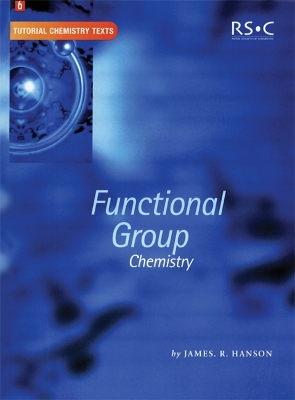Basic Concepts in Chemistry
2 total works
Functional Group Chemistry presents the chemistry of functional groups with an emphasis on patterns of reactivity, the consequences of the relative electronegativity of the atoms that constitute functional groups, the role of lone pairs and the stereochemistry of reactions at a particular group. The material is presented in four chapters. The first chapter describes some of the general principles that affect the reactivity of functional groups. The second chapter examines the chemistry of functional groups involving σ- C-X bonds as in alkyl halides, alcohols, ethers, amines and organometallic reagents. The third chapter covers the chemistry of both symmetrical and unsymmetrical π-bonded functional groups, typified by alkenes and carbonyl groups. The final chapter concentrates on aromatic compounds. It is concerned with the interactions between an aromatic ring and functional groups that are attached to it, such as their effect on the orientation of aromatic substitution. Each chapter concludes with a series of problems. The chemistry of the functional groups is considered here with a mechanistic rationale. Students are encouraged to consider the reactivity of functional groups in terms of their regions of electron deficiency and excess, and hence to identify the sites at which nucleophiles and electrophiles might react. Additional material is available on the website at www.rsc.org/tct Ideal for the needs of undergraduate chemistry students, Tutorial Chemistry Texts is a major series consisting of short, single topic or modular texts concentrating on the fundamental areas of chemistry taught in undergraduate science courses. Each book provides a concise account of the basic principles underlying a given subject, embodying an independent-learning philosophy and including worked examples.
Synthesis is one of the major endeavours of the organic chemist, and the design of a successful synthesis requires a sound knowledge of functional group chemistry, stereochemistry and organic reaction mechanisms. Organic Synthetic Methods introduces the major methods of creating carbon-carbon and carbon-nitrogen bonds, along with functional group interconversions (oxidation, reduction, halogenation). The use of protecting groups and solid-phase methods are also discussed. The analysis of the structure of a target molecule, in terms of the structural consequences of synthetic reactions, is introduced to enable the student to identify key dissections and building blocks and hence develop a suitable synthetic method. Examples of the synthesis of labelled compounds are also provided. Ideal for the needs of undergraduate chemistry students, Tutorial Chemistry Texts is a major new series consisting of short, single topic or modular texts concentrating on the fundamental areas of chemistry taught in undergraduate science courses. Each book provides a concise account of the basic principles underlying a given subject, embodying an independent-learning philosophy and including worked examples.

